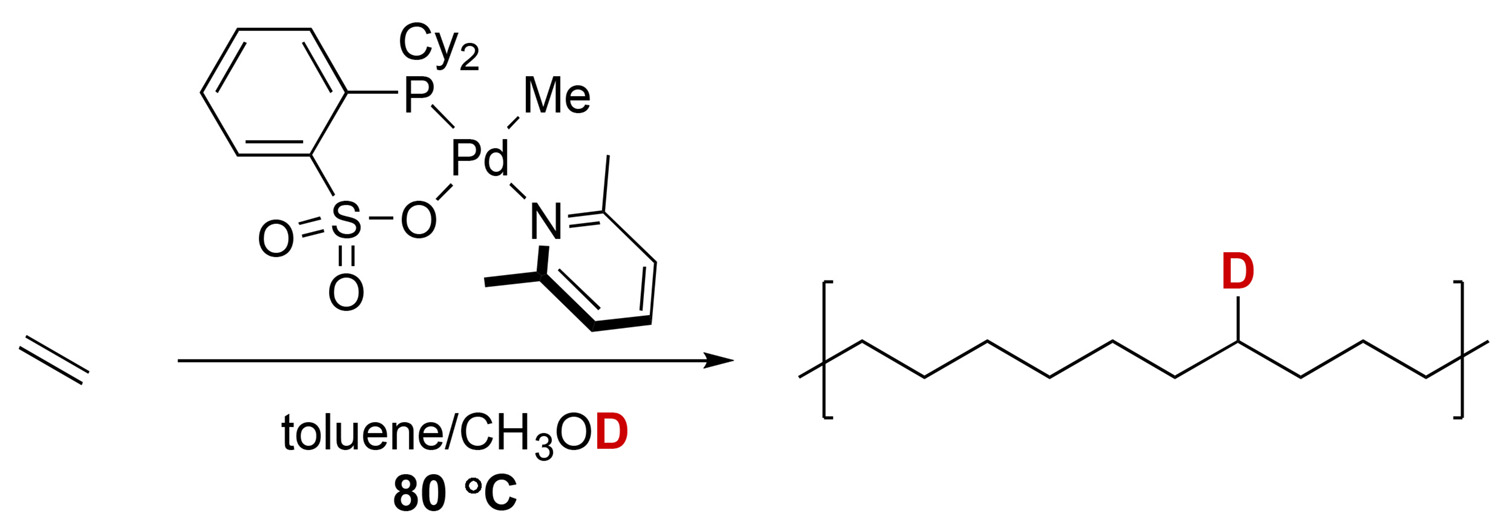M. Kanazawa, S. Ito, K. Nozaki*
Organometallics 2011, 30, 6049–6052. DOI: 10.1021/om2004207
Abstract: Ethylene polymerization catalyzed by palladium(II)/phosphine–sulfonate complexes was performed in the presence and absence of CH3OH or CH3OD. The addition of the protic solvents resulted in a significant decrease of molecular weight and a slight increase of internal alkene chain ends, suggesting that β-H elimination from alkylpalladium intermediates was accelerated, which led to the following alkene dissociation from the Pd center or alkene isomerization. In the presence of CH3OD, linear polyethylenes possessing deuteriums in the main chain were obtained presumably via a β-H elimination, H/D exchange, and reinsertion sequence.

